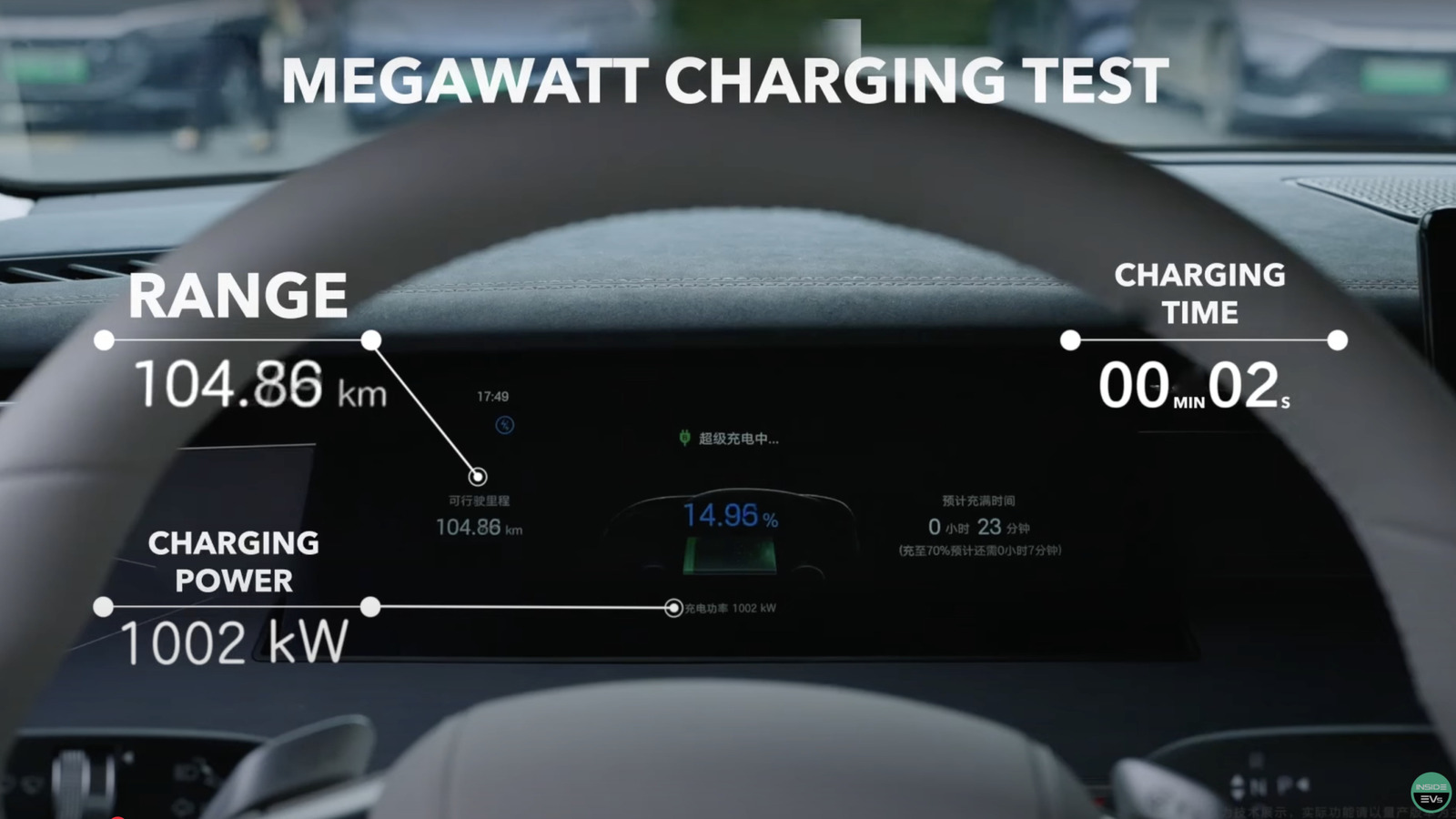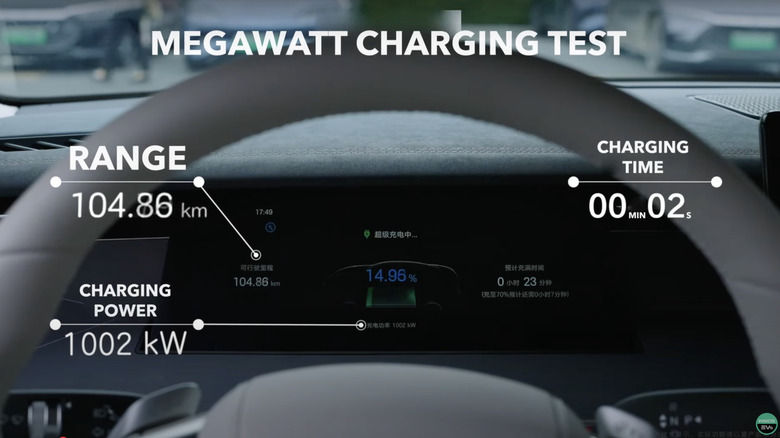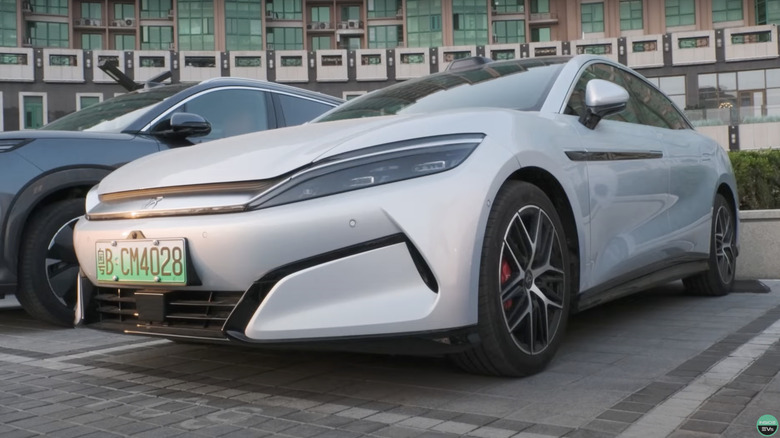Despite the massive advances EVs have made over the last 10-to-15 years, the biggest complaint from people who reflexively hate anything that might be better for the environment (or supported by Democrats) has had nothing to do with daily or weekly driving. It’s been that, despite the massive advantages of being able to charge at home, they’d never consider owning an EV until it’s possible to charge one in about five minutes. You know, because they never have to eat or use the bathroom on a road trip. Still, while it’s definitely overkill, the five-minute EV is finally a reality.
As you can see in the video embedded below, InsideEVs recently got a first-hand look at the latest ultra-fast-charging EV in action, and it really is impressive. BYD’s new Megawatt chargers really can add about 250 miles of range in roughly five minutes, and all it takes is a 1,000-kW charger and an EV with a system designed to safely charge that quickly. Sure, there’s the issue of none of the public chargers in the U.S. having that kind of power, but that’s fixable.
The real problem is that the EV in question is the BYD Han L, which means it’s Chinese, and those are a no-no here in the land of the free*
*some exceptions and limitations may apply
BYD Megawatt charging
While we won’t see the BYD Han L, BYD’s Megawatt charger or any further scientific innovation anytime soon, that doesn’t mean it isn’t still cool to see what BYD’s capable of. And since we’ve also decided to isolate ourselves and push the rest of the world into China’s arms, if you ever risk traveling internationally again, there’s a good chance you’ll see plenty of BYDs all over the place. When, or even if, these chargers will ever become common is much less clear, but the engineering that makes megawatt charging possible is still incredibly cool.
As InsideEVs explains, BYD developed what it calls the Super e-Platform that uses a 1,000-volt architecture, surpassing even the Lucid Gravity and its 926-volt architecture. And to make that possible, BYD had to develop its own components, because they didn’t already exist:
That involved self-developed 1,500-volt silicon-carbide power chips, redesigned electric motors and motor controllers, revamped power distribution components and even a reworked heating and air conditioning system. “From the vehicle’s perspective, a kilovolt architecture means multiple parts need to be designed to handle kilovolt-level power,” a BYD representative told InsideEVs.
They said it was an exercise in solving “multi-physics challenges”—electrical, magnetic, mechanical and thermal—across the entire vehicle from top to bottom to accommodate such unprecedented levels of power.
Incidentally, the Han L and the Tang L, a crossover that’s built on the same platform, can both hit 60 mph in less than three seconds, but we’re focused on a different type of speed right now. At current exchange rates, both EVs also cost roughly $30,000.
Building a better battery
Beyond developing the architecture to support Megawatt charging, BYD also had to develop a battery capable of safely handling so much electricity so fast. Instead of using a more power-dense nickel-manganese-cobalt chemistry that we see in the lithium-ion batteries more commonly over here, BYD’s so-called Flash Charging Battery is instead based on the lithium-iron-phosphate battery packs it uses in many of its other EVs. This version, however, cuts resistance in half and uses an advanced direct refrigerant cooling system to make sure the battery doesn’t overheat while being stuffed full of electrons faster than you can say, “Go.”
You might think charging at 1,000 kW would be terrible for your battery’s longevity, but all the improvements it reportedly made over its standard LFP batteries actually improved longevity. One spokesperson told InsideEVs, “Megawatt charging will not affect the battery, and the warranty policy is the same as the current [LFP] battery.”
Of course, you also need a charger that can deliver all that electricity, and BYD’s new Megawatt chargers certainly do that. They’re capable of 1,360 kW, and they also include built-in electricity storage, so they aren’t as dependent on the grid to supply full power, which can still reportedly be a problem in rural areas. It’ll take time to roll out the new Megawatt chargers, but for Chinese EV drivers who still want the fastest charge possible, InsideEVs reports the Super e-Platform has another trick up its sleeve — you can plug in two fast-chargers at the same time. So cool.
There’s a lot more to InsideEVs’ article, so you’re definitely going to want to give the whole thing a read. And yeah, there are plenty of perfectly valid criticisms of the Chinese government, but just imagine a world where the U.S. was equally as focused on driving EV innovation. Actually, wait, maybe don’t do that. It might be too depressing.




